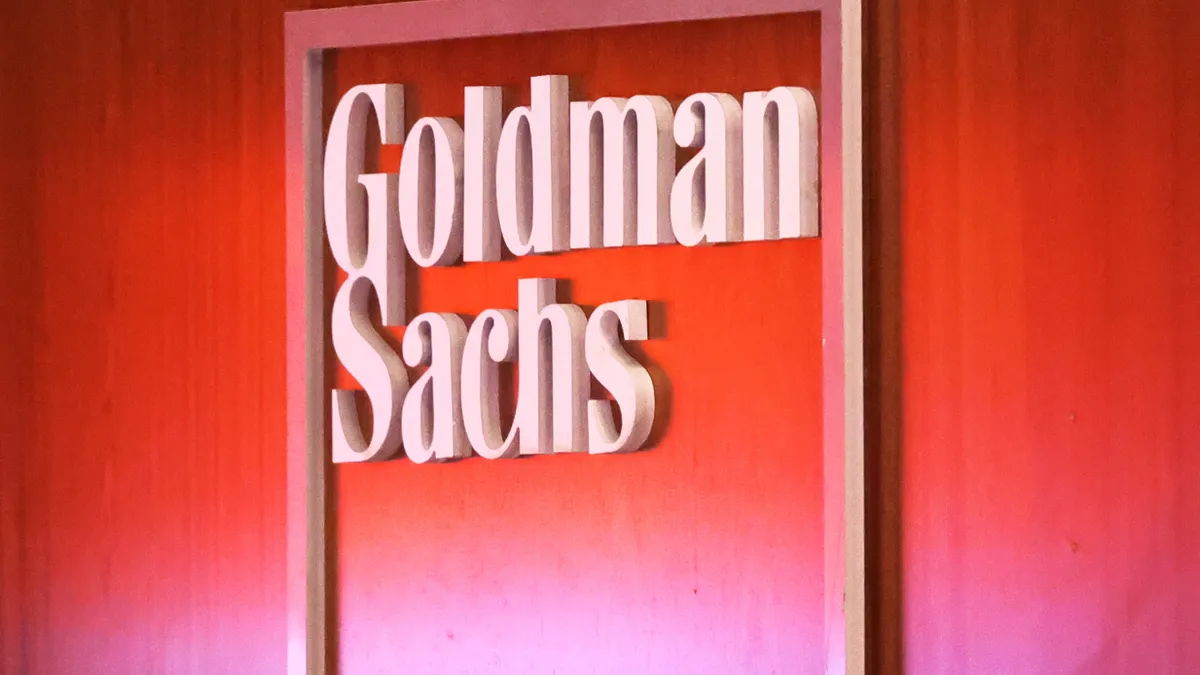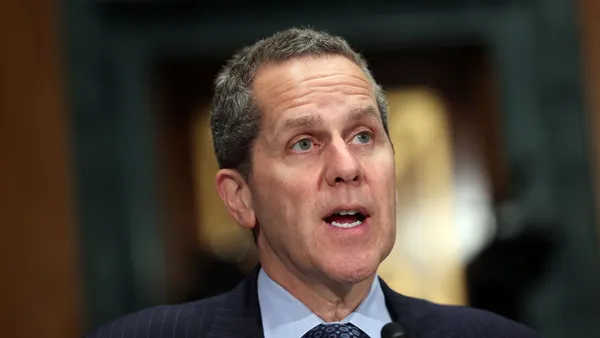Since the Federal Reserve began allowing banks to dispute stress test results in 2020, eight lenders had tried — and none had succeeded — in persuading the central bank to adjust its calculations.
Until now.
The Fed reduced Goldman Sachs’ stress capital buffer requirement to 6.2% for the fiscal year that begins Oct. 1, the central bank said Wednesday. That’s down from a 6.4% figure the Fed floated in June, when it posted the results of its annual stress test.
But Goldman argued that losses related to its sale of the GreenSky home-lending platform should not be used in stress test projections of future expenses, according to a Friday letter from the Fed to Goldman CEO David Solomon.
“We appreciate the Federal Reserve’s willingness to reconsider this matter,” Goldman CFO Denis Coleman said in a statement Wednesday. “We will continue to engage with our regulator to better understand their determinations and to advocate for a more transparent process.”
Goldman Sachs had requested an informal hearing with the Fed on the matter – and the central bank ultimately declined, saying representatives of Goldman and the Fed had met twice over the summer to discuss concerns.
Solomon, too, had been publicly vocal about his displeasure with the Fed’s 6.4% figure.
“The year-over-year increase in our stress capital buffer does not seem to reflect the strategic evolution of our business and the continuous progress we’ve made to reduce our stress loss intensity, which the Federal Reserve had recognized in our last three tests,” Solomon said during the bank’s second-quarter earnings call last month.
The revised 6.2% figure is still an increase over the 5.5% stress capital buffer under which Goldman is operating now.
Three components go into the common equity tier 1 capital requirement dictated by the Fed for banks with $100 billion or more in assets: a 4.5% minimum baseline; a stress capital buffer of at least 2.5%, based in part on the stress test results; and a surcharge for global systemically important banks. For Goldman, that latter figure is 3% for fiscal 2025.
Counting Wednesday’s adjustment, Goldman must hold 13.7% of its risk-weighted assets, rather than the 13.9% the Fed proposed in June. Goldman still will have the highest capital requirement of the six largest U.S.-based Wall Street banks. By comparison, Morgan Stanley will be required to hold 13.5% in fiscal 2025; JPMorgan Chase, 12.3%; Citi, 12.1%; Bank of America, 10.7%; and Wells Fargo, 9.8%. Of the 31 banks that took the Fed’s stress test this year, only two – the U.S. operations of Deutsche Bank and UBS – will have higher capital requirements than Goldman.
If a bank's held capital dips below the Fed’s prescribed percentage during the next fiscal year, the bank would be subject to restrictions on capital distributions and discretionary bonus payments, the central bank said.
The Fed concluded in June that Goldman would lose more than $40 billion on its loans in the severely adverse scenario of this year’s stress test.
However, “based on an analysis of additional information presented by the firm in its request, the Board determined it would be appropriate to adjust the treatment of particular historical expenses incurred by the bank in the stress testing models' input data, due to the non-recurring nature of those expenses,” the Fed said Wednesday.














